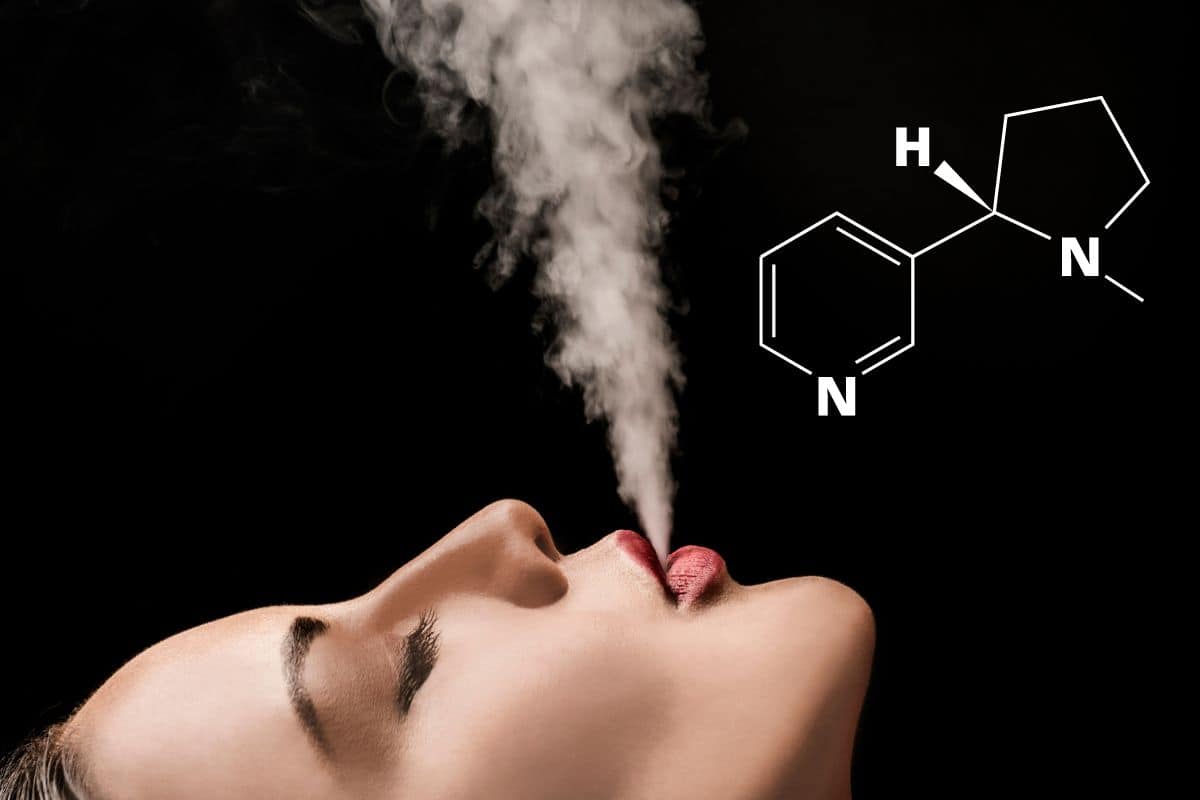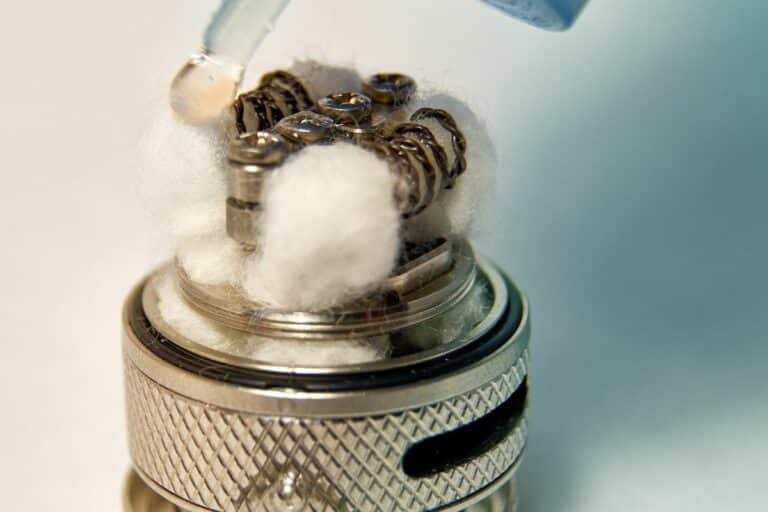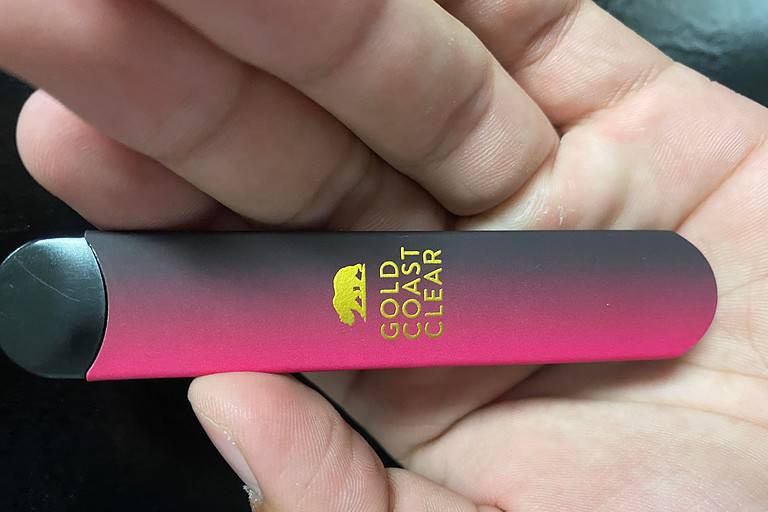How to Get Nicotine Out of Your System in 12 Hours: Expert Tips and Techniques
Nicotine, a stimulant found in tobacco products, can be quite challenging to eliminate from one’s system quickly. However, understanding how nicotine metabolizes in the body and implementing certain strategies may help expedite the process. It is important to note that the speed at which nicotine leaves the body may vary depending on individual factors such as metabolism, age, and overall health.
One crucial factor in removing nicotine from the body is hydration. Drinking plenty of water helps to flush out toxins, including nicotine, through urine. Additionally, engaging in physical exercise may potentially speed up the detoxification process, as it increases metabolism and promotes sweating. Although nicotine’s half-life is typically around 2 hours, complete elimination within 12 hours may be difficult. Be aware that it could take a bit longer for the body to completely rid itself of the substance.
Table of Contents
Understanding Nicotine and its Effects
Nicotine is a highly addictive substance found in tobacco products, such as cigarettes and e-cigarettes. It affects various systems within the body, including the brain, heart, and lungs. This section will discuss the effects of nicotine on these systems and provide a clear understanding of its impact on the body.
When nicotine enters the body, it rapidly reaches the brain and stimulates the release of neurotransmitters, such as dopamine. Dopamine is a chemical responsible for creating feelings of pleasure and reward, which is a primary reason behind the addictive nature of nicotine. Over time, the brain becomes reliant on nicotine to maintain these pleasurable sensations, leading to addiction.
In addition to its effects on the brain, nicotine has a significant impact on the cardiovascular system. It causes an increase in heart rate and blood pressure, putting additional strain on the heart. This increased workload can lead to long-term damage to the cardiovascular system, increasing the risk of heart disease and stroke.
NEW CUSTOMER DISCOUNT
Save 15%
15% OFF YOUR ENTIRE ORDER FOR NEW CUSTOMERS USE CODE WELCOME15!

Nicotine also affects lung function by constricting the airways and promoting inflammation. Consequently, it impairs the ability of the lungs to efficiently exchange oxygen and carbon dioxide. This effect can contribute to respiratory issues and exacerbate conditions such as asthma and chronic obstructive pulmonary disease (COPD).
In summary, nicotine is a potent addictive substance that affects multiple systems within the body, ranging from the brain to the heart and lungs. It has various detrimental effects on health, including impaired lung function, increased blood pressure, and the development of cardiovascular diseases.
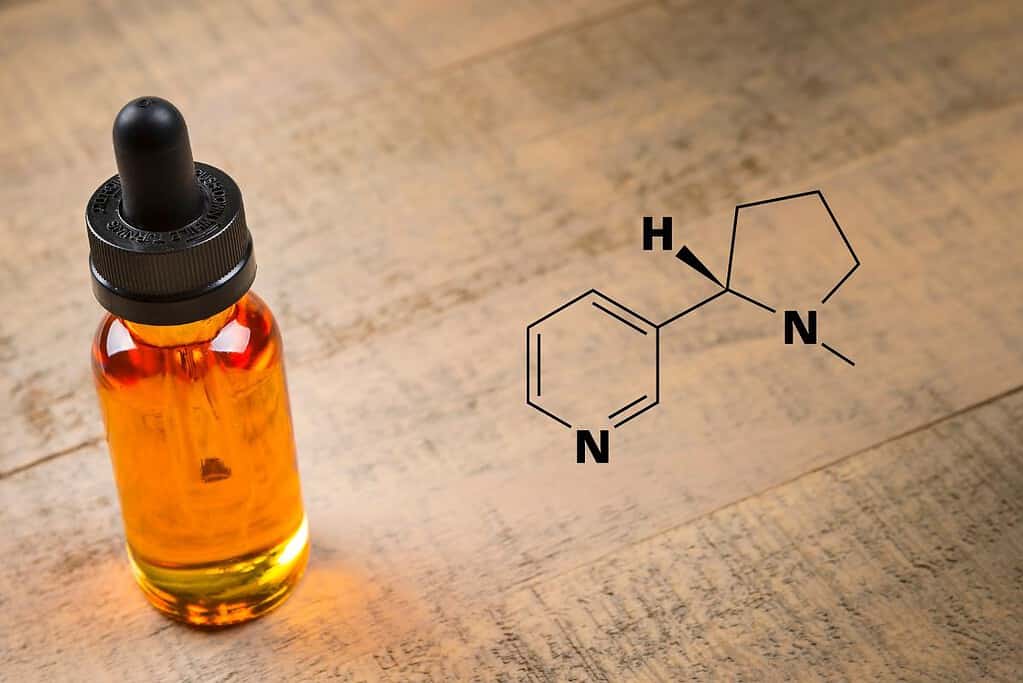
Nicotine Metabolism and Elimination Process
Nicotine, a highly addictive substance found in tobacco products, is metabolized primarily in the liver. The liver breaks down nicotine into several metabolites, one of which is cotinine. Cotinine is often used as a biomarker to measure nicotine exposure, as it has a longer half-life than nicotine.
The half-life of nicotine is approximately 2 hours, while cotinine’s half-life can range between 12 to 20 hours. Therefore, it is almost impossible to completely eliminate nicotine from one’s system within just 12 hours. However, factors such as metabolism and individual body chemistry can influence the rate at which one’s body processes and eliminates nicotine.
Once nicotine is metabolized, it is primarily excreted through the kidneys and eliminated from the body in urine. Although urine tests are commonly used to measure nicotine and cotinine levels, blood tests and hair tests can also be used for this purpose. Each test has its own detection window, with hair tests able to detect nicotine and cotinine for a much longer period than blood or urine tests.
It is important to note that the effectiveness of various methods to speed up the elimination process can vary from person to person. Recommending a generic solution to eliminate nicotine within 12 hours may not be practical or accurate for every individual. Nonetheless, certain steps can be taken to help support the body’s natural detoxification processes. These may include:
- Staying well-hydrated helps the kidneys function more efficiently and aids in flushing out toxins, including nicotine and cotinine, from the body.
- Consuming a balanced diet rich in antioxidants, vitamins, and minerals can support liver health and the metabolic processes required for nicotine elimination.
- Engaging in regular, moderate exercise can contribute to a faster metabolism and encourage overall detoxification in the body.
In summary, the complex process of nicotine metabolism and elimination involves the liver, kidneys, and various bodily functions that are influenced by unique individual factors. Aiming to eliminate nicotine from one’s system in 12 hours may not be feasible for all individuals. While it is important to avoid making exaggerated claims, helpful steps can be taken to support the body’s efforts in clearing out nicotine more efficiently.

The Influence of Smoking and Vaping
Smoking traditional cigarettes and using electronic cigarettes, or e-cigarettes, are both common methods of consuming nicotine. Smoking involves the combustion of tobacco products, while vaping consists of inhaling an aerosol produced by heating a liquid solution.
Tobacco smoke contains over 7000 chemicals, many of which are harmful and toxic. Nicotine is the primary addictive substance in both cigarettes and e-cigarettes, and it is absorbed quickly into the bloodstream when inhaled. The level of nicotine delivered through smoking and vaping varies depending on factors such as the type of product, frequency of use, and individual user habits.
E-cigarettes are often considered a safer alternative to traditional tobacco products due to the absence of tar and certain harmful chemicals found in smoke. However, e-cigarettes still deliver nicotine and other potentially harmful substances, such as propylene glycol and metal particles. The long-term effects of vaping on health remain uncertain, though some studies suggest that it may have negative impacts on pulmonary and cardiac functions.
Secondhand smoke, produced when a smoker exhales, poses a health risk to non-smokers who may be exposed. Exposure to secondhand smoke can lead to various respiratory issues and increase the risk of heart diseases. While e-cigarettes do not generate smoke like traditional cigarettes, they still release aerosols that can contain nicotine and other potentially harmful substances. It is essential to consider the risks associated with secondhand exposure, particularly for vulnerable populations such as children and pregnant women.
In summary, both smoking and vaping introduce nicotine into the user’s system. Although e-cigarettes may offer a less harmful alternative due to reduced exposure to toxic smoke, they still deliver potentially harmful substances. Avoiding or limiting the consumption of tobacco products and e-cigarettes can help reduce the risks associated with nicotine exposure.
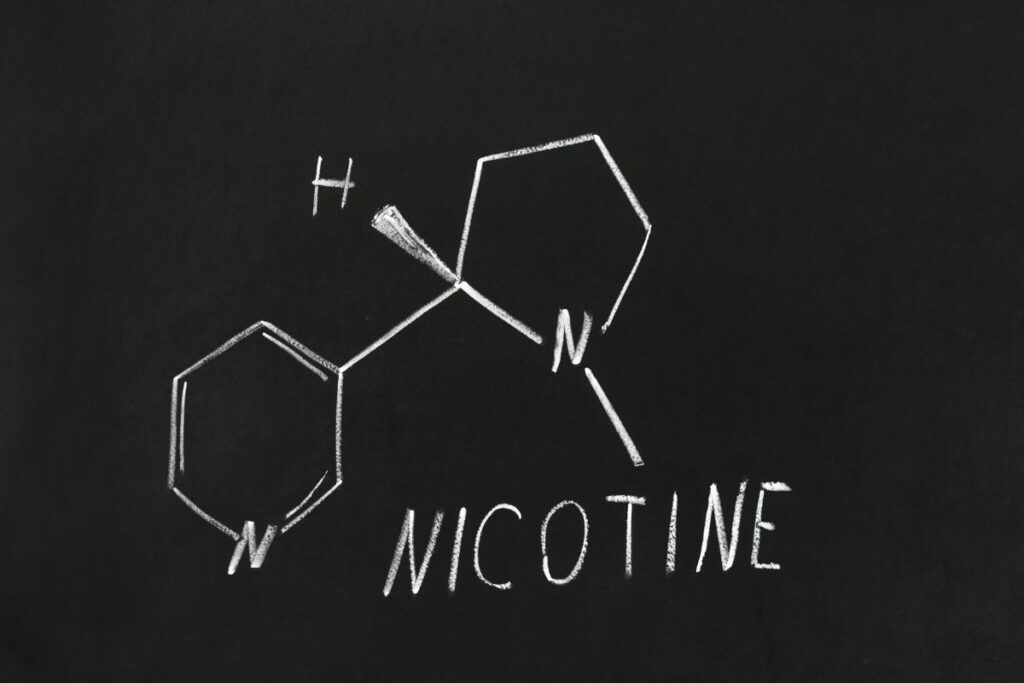
Nicotine Withdrawal and Its Symptoms
Nicotine withdrawal is a natural process that occurs when a person stops using tobacco products, leading to a series of uncomfortable symptoms. The withdrawal timeline usually begins 6-12 hours after the last nicotine use and can last for more than 3-4 days in some cases.
During nicotine withdrawal, individuals may experience both physical and psychological symptoms. Some of the common psychological symptoms include cravings, irritability, depression, anxiety, and increased stress levels. These effects can make it difficult for someone to quit smoking, as the cravings for nicotine often persist during the withdrawal period.
Physical withdrawal symptoms may also manifest during nicotine withdrawal. These symptoms might include insomnia, headaches, nausea, restlessness, fatigue, changes in appetite (often with an increase in appetite), constipation, and dizziness. These physical symptoms may vary in severity depending on the individual’s habit and the duration of the tobacco use.
It is important for individuals attempting to quit smoking to be aware of these symptoms and manage them effectively. This might involve adopting stress-relieving techniques, maintaining a healthy diet, and engaging in regular physical activity. In some cases, healthcare professionals may prescribe medications to help alleviate withdrawal symptoms and facilitate the cessation process.
In summary, nicotine withdrawal is characterized by a series of psychological and physical symptoms that arise when a person stops using tobacco products. Understanding and managing these symptoms is key to successfully quitting smoking and maintaining a nicotine-free lifestyle.
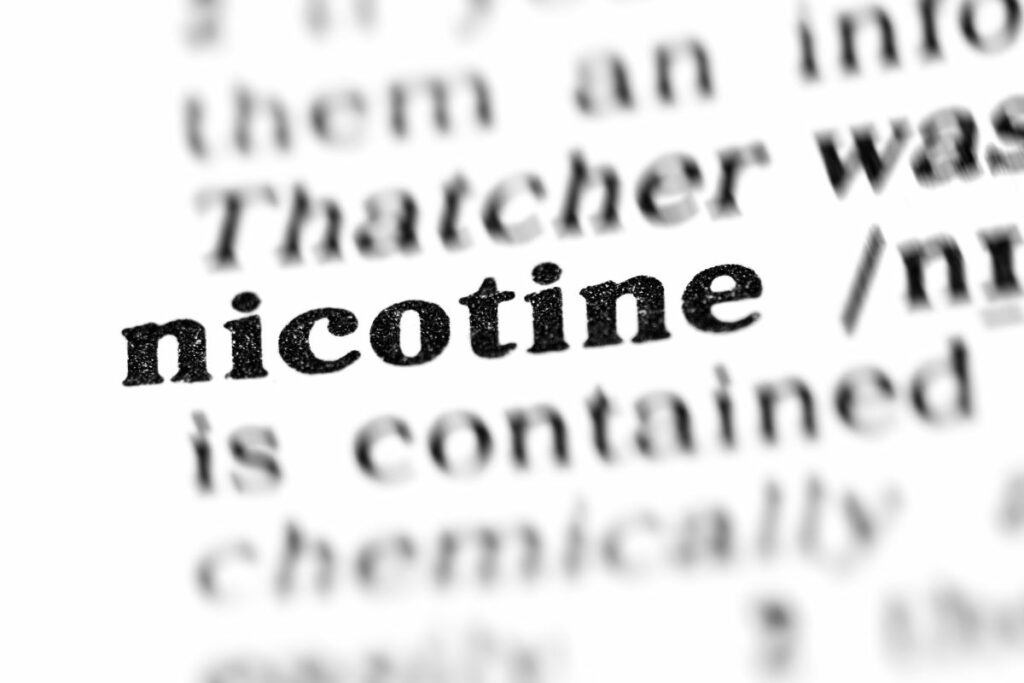
Methods to Speed Up Nicotine Removal
To speed up the process of nicotine removal from the body, several methods can be employed. These methods include improving one’s diet, increasing water intake, engaging in regular exercise, and consuming foods rich in antioxidants.
- A healthy diet plays a significant role in flushing nicotine out of the system. Incorporating foods rich in antioxidants, such as oranges, broccoli, garlic, radishes, celery, carrots, and kiwi, helps the body combat the damaging effects of nicotine. These foods also support liver function, which aids in the detoxification process. Additionally, vitamin C can boost the immune system and improve the body’s ability to remove toxins.
- Drinking plenty of water helps to flush out nicotine and other harmful substances from the body. It is important to stay hydrated, as water supports the kidneys in eliminating waste products. Furthermore, water can also reduce cravings for nicotine, making it easier to resist the urge to smoke.
- Coffee might have a dual effect: while it can stimulate the metabolic rate, it may also prolong nicotine cravings. Therefore, it is advisable to limit coffee consumption during the detoxification process. Instead, focus on drinking water and other healthy beverages like herbal teas.
- Engaging in physical activity such as exercising, cardio, or walking can significantly support the body in purging nicotine. Exercise promotes blood circulation, which in turn helps transport toxins out of the body more efficiently. Moreover, physical activity releases endorphins, which can improve mood and reduce stress levels—factors that often contribute to nicotine cravings.
In conclusion, by adopting a healthy diet that includes antioxidant-rich foods, staying hydrated with water, limiting coffee intake, and engaging in regular physical activity, nicotine removal from the body can be accelerated. It is important to remember that consistency is key, and these methods should be practiced regularly to achieve optimal results.

The Role of Nicotine Replacement Therapy
Nicotine Replacement Therapy (NRT) is a widely recognized method for individuals looking to quit smoking or reduce nicotine intake. NRT products, such as patches, gum, and lozenges, deliver controlled doses of nicotine to help ease withdrawal symptoms and cravings. While NRT can be useful in aiding the cessation process, it is essential to note that these products are not designed to eliminate nicotine entirely from your system within a short 12-hour time frame.
Using patches, for instance, is a popular and effective way to administer nicotine to the body continuously. They slowly release nicotine into the bloodstream through the skin, maintaining steady levels throughout the day. This method is often preferred due to its ease of use and ability to reduce cravings for extended periods.
Another popular form of NRT is nicotine gum. Chewing the gum releases nicotine, which is then absorbed in the mucous membranes of the mouth. The user can adjust the gum’s frequency based on cravings or withdrawal symptoms and gradually reduce the nicotine dose. However, it is important to follow the instructions to prevent overconsumption and potential side effects.
Nicotine replacement lozenges also serve as a feasible option for those eager to quit smoking. Similar to the gum, lozenges dissolve in the mouth, providing users with an adjustable nicotine dose. This allows for better control over the cessation process.
It is crucial to remember that NRT products aim to support the withdrawal and cessation process, not to eliminate nicotine from one’s system within a 12-hour period. NRT products may still require some time for the body to metabolize and excrete the remaining nicotine. Individuals seeking to remove nicotine from their system rapidly may benefit from other methods, such as hydration, exercise, and a healthy diet, while being aware that total elimination in such a short time frame may not be feasible.
Pros and Cons of Nicotine Use
Nicotine, a stimulant found in tobacco products, is an addictive substance that can have various effects on the human body. Understanding the pros and cons of nicotine use can help smokers make informed decisions about their habits.
For some people, nicotine can provide temporary cognitive enhancement and improved focus. It has been shown to help adults with attention-deficit/hyperactivity disorder (ADHD) experience short-term benefits in attention and concentration when using a nicotine skin patch. However, it is essential to keep in mind that this is not a long-term solution, as continuous use of nicotine can lead to addiction and other health problems.
Nicotine use can also contribute to weight management for some smokers, as it can act as an appetite suppressant and increase metabolism. This may lead to temporary weight loss or prevent weight gain; however, relying on nicotine for weight control is not a sustainable or healthy option.
On the other hand, nicotine use has notable drawbacks. It can increase heart rate, blood pressure, and constrict blood vessels, leading to a higher risk of heart disease and stroke. The frequency of nicotine consumption can exacerbate these risks, especially among heavy smokers.
Moreover, the use of nicotine in tobacco products such as cigarettes can significantly affect lung function. Smoking can damage the lungs, mouth, and throat, potentially leading to chronic obstructive pulmonary disease (COPD), emphysema, or even lung cancer. Additionally, smoking can irritate the skin and cause premature aging, as nicotine reduces the amount of oxygen and nutrients that reach the skin’s surface.
Furthermore, being a highly addictive substance, nicotine can be difficult for smokers to quit. It can trigger cravings and withdrawal symptoms, sometimes leading to a cycle of dependence. Some people may find that specific situations or stressors may increase their desires to use nicotine, making it even more challenging to quit. Many factors, such as sex, can also influence an individual’s likelihood of developing an addiction to nicotine.
In conclusion, while there may be some temporary benefits to using nicotine, it’s essential to understand the risks and long-term consequences associated with nicotine use. It’s crucial for smokers to weigh the potential benefits against the dangers to their health and well-being.
Conclusion and Further Tips for Quitting
When attempting to get nicotine out of the system within 12 hours, it is important to recognize that this time frame may not be realistic for everyone. Nicotine metabolism varies from person to person, and the duration varies based on factors such as genetics, body weight, and frequency of use. However, by following some tips and incorporating smoking cessation strategies, individuals can work towards a healthier lifestyle and reduction of nicotine in their system over time.
Staying hydrated is crucial, as water can help flush out toxins and speed up the process. Engaging in physical activity can also contribute to increasing metabolism and supporting the natural detoxification process. Consuming a diet rich in antioxidants, vitamins, and minerals can further aid in the body’s efforts to eliminate nicotine.
Incorporating smoking cessation strategies is essential for those looking to quit smoking and reduce nicotine levels in the body. Nicotine replacement therapy, such as patches or gum, can help to manage withdrawal symptoms and reduce cravings, increasing the chances of success. It’s also important to seek support from friends, family, or a healthcare professional during the quitting process.
For those interested in alternatives to tobacco, it is important to note that herbal products, such as anabasine, might be a helpful tool in reducing nicotine dependency. Anabasine is a plant-based alkaloid with structural similarities to nicotine. While research on anabasine as a smoking cessation aid is limited, exploring non-tobacco alternatives can be beneficial for some individuals. However, always consult with a healthcare professional before using any alternative products.
In conclusion, remember that each person’s journey towards quitting smoking and reducing nicotine in their system is unique. Maintaining a consistent, determined mindset, and incorporating the aforementioned tips and smoking cessation strategies, can lead to lasting positive change and improved overall health.
Browse popular vape collections:
- Nicotine Disposables
- 2000 Puff Nicotine Disposable Vapes
- 2500 Puff Nicotine Disposable Vapes
- 5000 Puff Nicotine Disposable Vapes
- 6000 Puff Disposable Nicotine Vapes
- 7000 Puff Nicotine Disposable Vapes
- Disposable Vape Deals
- Best Vape Brands
- 8000 Puff Nicotine Disposable Vapes
- 9000 Puff Nicotine Disposable Vapes
- 5% Nicotine Disposable Vapes
- Rechargeable Nicotine Disposable Vapes
- Vape Coils
- Dab Wax Pens
- Dab Wax Pen Battery
- Yocan Vapes
- Vape Cases
Frequently Asked Questions
What foods help to remove nicotine from your body?
Consuming a diet rich in antioxidants can help in eliminating toxins like nicotine from your body. Include more fruits and vegetables, such as oranges, kiwi, strawberries, carrots, and spinach in your diet. Drinking plenty of water also helps flush out toxins.
Are there ways to eliminate nicotine from vaping faster?
Accelerating nicotine removal from your body can be achieved by ensuring proper hydration, regular exercise, and a healthy diet. Drinking green tea and herbal teas may also help remove nicotine faster; however, there is no guaranteed method to eliminate nicotine rapidly.
What methods can speed up cotinine or nicotine removal?
Some methods that may aid in speeding up nicotine or cotinine removal include:
- Staying hydrated by drinking plenty of water
- Engaging in regular physical exercise
- Consuming a diet rich in antioxidants and fiber
- Avoiding further exposure to nicotine
Keep in mind that these methods may help, but the ultimate factor in eliminating nicotine and cotinine from your system is time.
How can I ensure a negative blood test result before surgery?
To ensure a negative blood test result before surgery, it is crucial to quit smoking and avoid all sources of nicotine, including vaping and nicotine replacement therapy products, well in advance of the scheduled surgery date. Speak to your healthcare provider for specific recommendations and guidance.
How long do blood nicotine levels remain elevated after vaping?
Blood nicotine levels can remain elevated for up to 12 hours after vaping, although this may vary depending on factors like the degree and duration of usage. The amount of nicotine consumed and individual metabolism also influence how long nicotine remains in your system1.
What is the typical duration for nicotine craving cessation?
Nicotine craving cessation can take different durations for various individuals. Generally, intense cravings may subside after a few weeks of quitting smoking or stopping nicotine use, but occasional cravings may persist for months or even years. Remember, the longer an individual remains nicotine-free, the easier it becomes to resist cravings.
Footnotes

